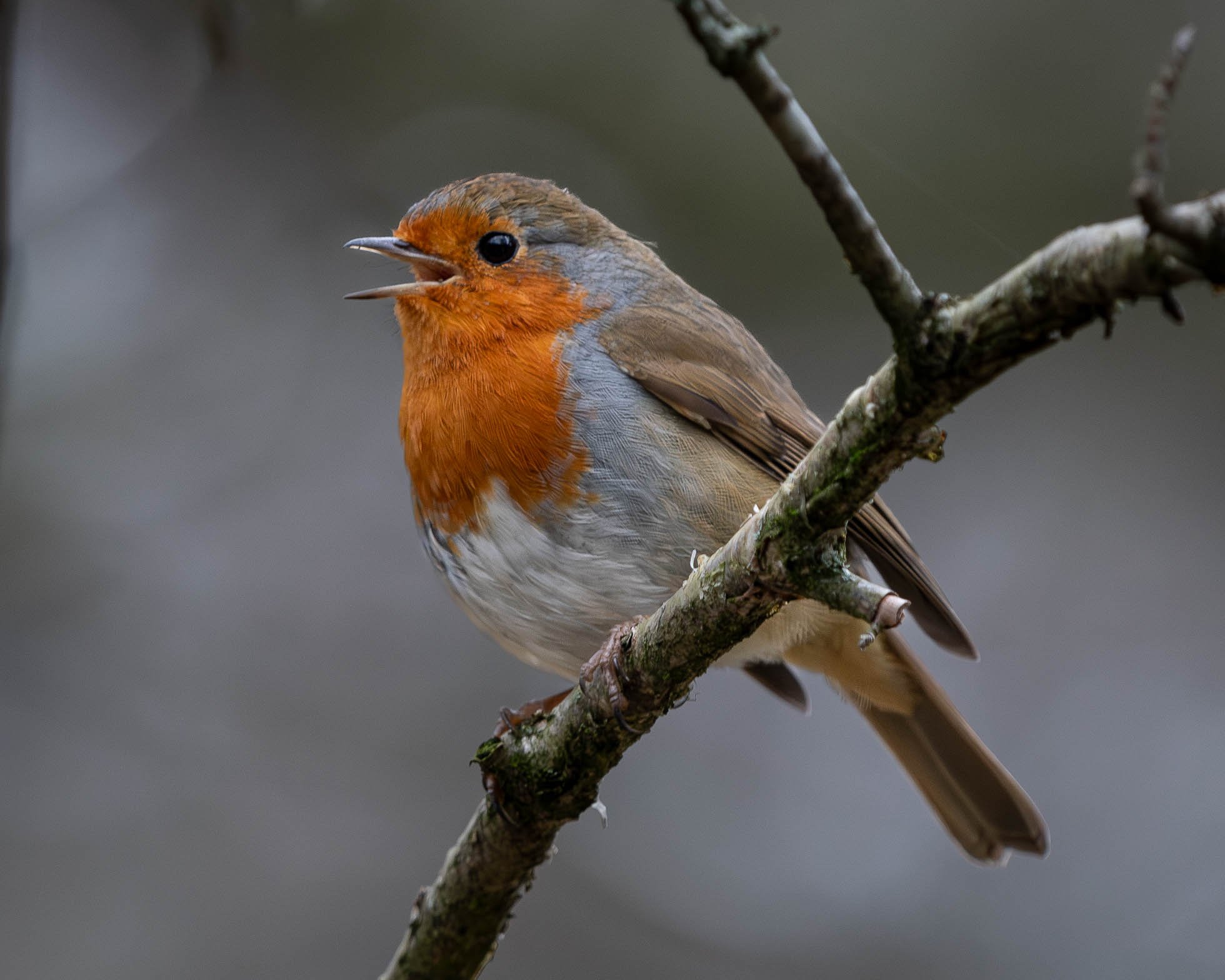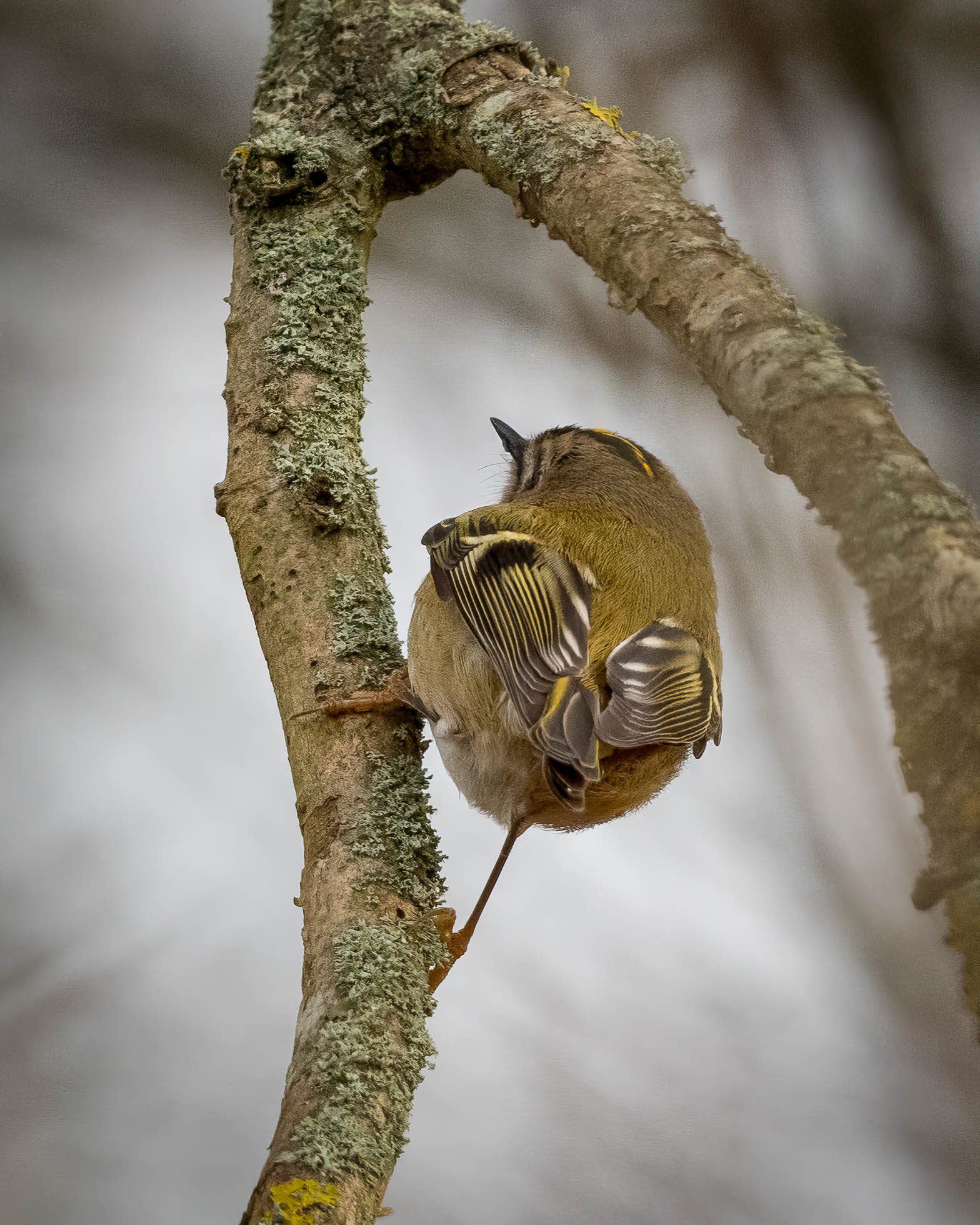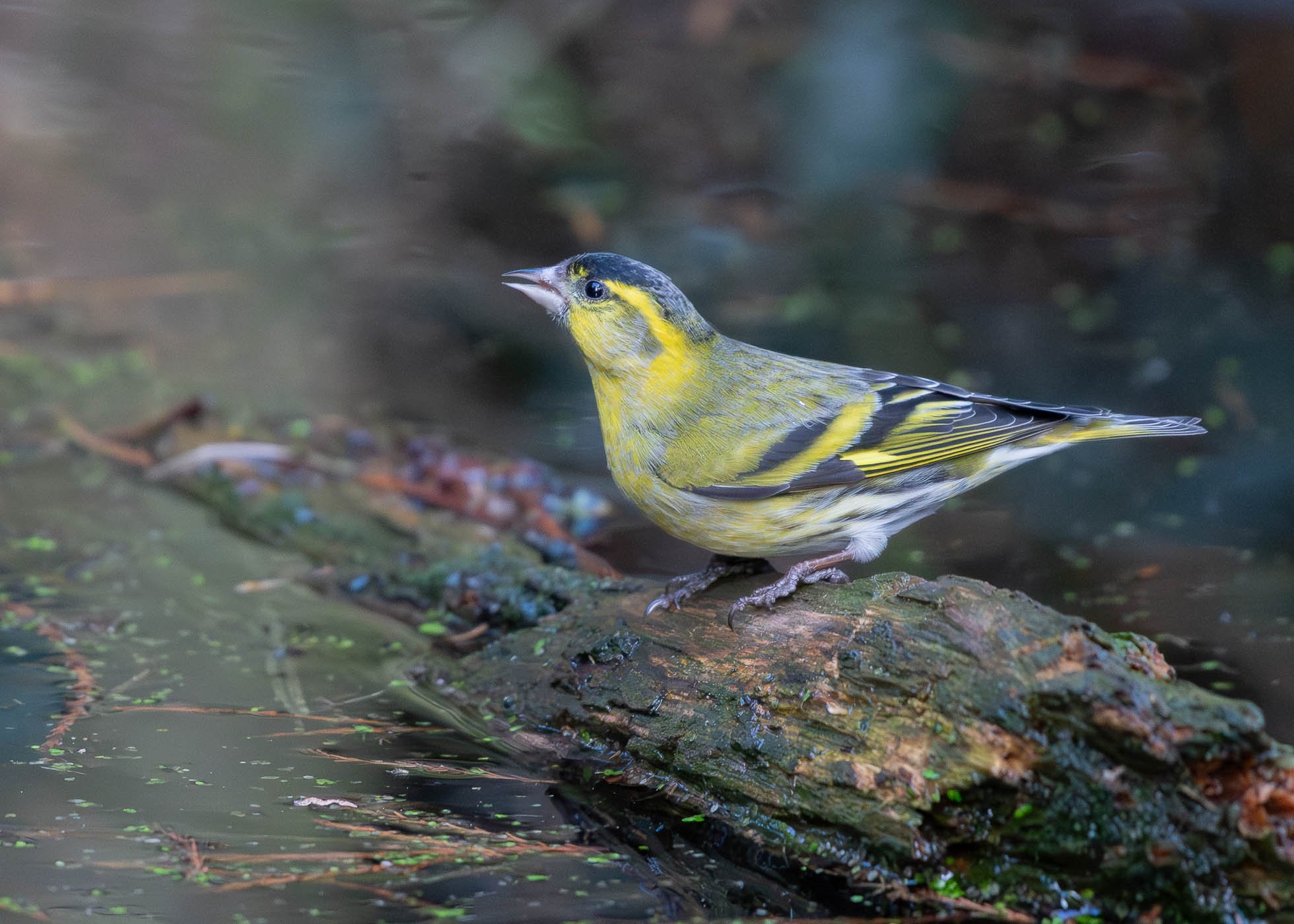February 2024 has certainly lived up to its name of February Fill Dyke, The rain sometimes has been absolutely torrential, and it has become February Over Fill Dyke, but on the plus side it has been very mild for the time of year.
Despite the weather we have managed to get out on days between the rain and at the beginning of the month we visited the RSPB Lodge at Sandy which is not far from us. We always spot Goldcrests here and this one was flitting around and was very close.
The Lodge, headquarters of the RSPB with lovely wildlife friendly gardens.
Of course, you cannot have a wildlife garden without a Robin.
Goldcrest, these birds are so tiny. Weighing in at less than 6 grams, the Goldcrest along with its cousin the Firecrest, are Europes smallest bird. Its Latin name, Regulus regulus, also refers to its crown and means 'petty king' or 'prince'. Although it is our smallest songbird, it can lay up to 12 eggs in a clutch, which is about one and a half times the adult female's bodyweight.
We spotted Nuthatches around the garden shed area, probably because the gardeners had left some food out for them.
There was a large flock of Redpoll around. They were very mobile but we found an area where they were dropping down to the ground to collect grit, and were able to get a few pictures. Grit is an essential part of a wild birds diet, they use it to maintain a healthy digestive system.
We spent most of the month visiting the Thetford Forest area. The soil is very sandy and free draining so its easy walking and very little mud. Unlike at home, where as our local dog walk and woodland is like wading through treacle. We felt like we were taking one step forward and two back.That’s when we were not ankle in water. The wood resembles the Florida Everglades without the humidity. Not spotted any alligators yet. Little Eva dog is not bothered though.
Back near Thetford, at one of many little drinking ponds that have been provided for the wildlife throughout the forest we found small mixed flocks of Siskin and Redpoll.
A Lesser Redpoll and a Common or Mealy Redpoll at the drinking pond.
The Lesser Redpoll is a small finch of mixed woodland, birch scrub and wet woodland. It spends much of its time feeding on seeds and invertebrates in tall trees, especially Birch, Alder and Larch. It has recently been split from the Common Redpoll to form a separate species.
We have been searching Thetford Forest for Crossbills. The forest covers over 47,000 acres so we had a big task on our hands. But never fear, we know people who are in the know. Because of their dry diet of mainly conifer cones, Crossbills need to frequently look for water and the best way to find them is to find out where their favourite watering holes are located. So, after a bit of a wait at this particular pond, one female Crossbill came down for a drink. Superb!!
The Crossbill is a chunky finch with a large head and bill which is crossed over at the tips. Interestingly, the bills can be crossed left or right, for no particular reason, they just are. Probably the same as we have right handed or left handed people. This crossed bill is used to extract seeds from conifer cones. Adult males are a distinctive brick-red and females greenish-brown. Such a shame the male did not appear as they are really striking birds, although this female was a beautiful colour herself.
Lackford Lakes in Suffolk, part of the Suffolk Wildlife Trust, is always worth a visit. We should try and visit more often as its not too far. It was a bit wet to go to the East lakes, and to be honest we had walked far enough today, so we just stayed on the Kingfisher Trail, with a little diversion walk into the woodland and found a very fat Cock Pheasant.
The Egyptian Geese seem to be taking charge of this small island with an old tree trunk. Wonder if they will be looking to nest here?
There seemed to be Snipe everywhere. Don’t think we have seen so many in one place before.
As well as lakes you can get quite close to the birds on the woodland walk. Nuthatches were everywhere, just leave a bit of seed on a log and they appear.
Did you know? Nuthatches are the only species which can walk up and down a tree, they don’t use their tail for support but rely on the strength of their legs and toes to hold onto the surface of a tree. Unlike woodpeckers or tree creepers the Nuthatch can descend head first back down tree trunks. Clever little things.
A Muntjac, came down to the woodland stream for a drink and then crept away, gradually disappearing into the surrounding woodland, as quietly as she had arrived. She did have a fawn with her but it stayed well camouflaged in the background.
We got several pictures of a Jenny Wren as she hopped along the bank and on and off twigs in the water. She seemed to be admiring her reflection each time she stopped.
A Marsh Tit. Another little bird we managed to get good views of this month.
Lots of very tame Robins around Lackford Lakes. Always on the ask for food and posing for pictures.
What a difference in a week! This was our usual walk in Thetford Forest and the small trees had burst into blossom. We thought at first this was very early Blackthorn blossom, which later on produce blue/black Sloe berries, great for gin, but we have since found out that it is in fact Cherry Plum blossom. The flower of the Cherry Plum is bigger than that of the Blackthorn but apart from that they are very similar. However, the Plum is the earliest to flower (usually in March) and the Blackthorn flowers 4 weeks later in April.Cherry plums can be eaten raw or used to make wines or jams. The middle of February is still early for this blossom.
Insects were making the most of the early blossom. A very large Red Tailed Bummble Bee, doing what bees do.
The blossom was full of Red Admirals, we counted about twenty in one small area, but overall there must have been twice that amount.
It was not all bees and butterflies on the blossom. Some insects were large hoverflies. Hoverflies are true flies, The larger ones are marked to mimic bees and wasps. In Britain there has been over 270 species recorded.
We didn’t think we would be showing so many insect pictures in the February diary. The world is changing and nature with it.
A quick visit back to Lackford Lakes and what a difference to the time before. Many paths were impassable or wellies needed to access them. The water level in the lakes had risen, meaning that some of the islands had disappeared and there was limited space to roost on the ones that were just above the water line. So a lot of disagreements were going on as to who owned what space.
The Grey Lag Geese obviously thought that their little island was full, and did not tolerate the Heron at all.
At least the ducks were happy with all the water and many of the Tufted were already in pairs.
The Garganey were also in pairs and not moving off their little bit of land.
Well, has it been a Waxwing Winter as forecast?
Yes, it certainly has. As at the end of this month, an irruption of thousands of Waxwings had spread to all parts of the UK and Ireland, due, its thought, to the very severe weather conditions in Scandinavia. Around Christmas time we had some visiting villages nearby but they were very mobile and had moved on before we could find them. March is probably the month when they will start their journey back to Scandinavia. They have been great to see and are really handsome birds. This picture, showing the red “wax” tips on the wings, is from November when we caught up with them in Norwich.



























